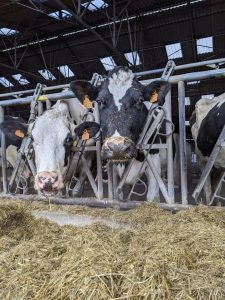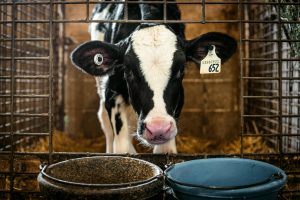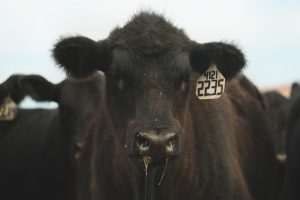Nuria García-Fernández
Introduction
According to their etymology, antimicrobials are substances against the life of microorganisms. (The word “antimicrobial” comes from the Greek “anti” [which means “against”], “mikros” [meaning “small”], and “bios” [which means “life”]). These compounds are used to treat infectious diseases in humans and animals. Doctors, veterinarians, and patients commonly refer to them as “antibiotics”. However, the terms “antimicrobial” and “antibiotic” are not synonymous. The noun “antibiotic” was used for the first time in 1889 by the French biologist Paul Vuillemin to describe the destruction of one organism by another. However, the term was introduced in 1941 by the microbiologist Selman A. Waksman, later awarded the Novel Prize, who defined an antibiotic as a substance produced by microorganisms that has the ability, in solution, to selectively inhibit growth and even destroy other microorganisms14,22,26. Therefore, according to this definition, the term “antibiotic” refers only to substances of microbial origin that act on other microorganisms; it does not refer to synthetic compounds (such as sulfonamides or quinolones), semi-synthetic substances (amoxicillin or amikacin, among others), substances of plant origin (such as alkaloids), or substances of animal origin (lysozyme, among others). Nor does it refer to substances that are active against animal cells (such as anticancer drugs).
Antimicrobials that are routinely administered to humans and animals should show selective toxicity, i.e., affect only pathogenic microorganisms and not the host. In this selective toxicity, the mechanism of action of each substance is involved. The most selective antimicrobials are those that affect bacterial structures, for example, the bacterial cell wall or metabolic pathways, such as the synthesis of folic acid, that are not present in eukaryotic cells. In this way, antimicrobials that act on DNA, such as nitrofurans or nitroimidazoles, frequently also have toxic effects on humans and animals. On the other hand, biocides, disinfectants, and antiseptics such as quaternary ammonium compounds are applied to objects and surfaces because they are toxic to both prokaryotes and eukaryotes.
Before the development of antimicrobials, there was a high mortality rate due to bacterial infections caused by microorganisms such as Staphylococcus aureus, Streptococcus pyogenes, and Mycobacterium tuberculosis. The introduction of antimicrobials drastically reduced deaths from these infections but did not completely solve the problem of the prevalence of these diseases23. The enthusiasm over the newly discovered antimicrobials and the disappointment resulting from the emergence of bacterial resistance to antimicrobials have alternated since the introduction of antibacterial chemotherapy around the year 1940. This concern is exacerbated by the frequent detection of multiresistant microorganisms among patients in critical condition.
During the last few years, many of the molecular mechanisms that produced bacterial resistance to antimicrobial agents have been elucidated, notably improving the understanding of the genetic basis of multidrug resistance25.
Resistance to antimicrobials
Resistance can be defined in terms of multiple criteria (genetic, microbiological, biochemical, and clinical) that do not always overlap; the most common definitions are based on microbiological (in vitro) and clinical (in vivo) criteria1. According to the microbiological definition, a strain is resistant if it grows at high concentrations of the antimicrobial drug compared to phylogenetically related strains. Therefore, resistance is not a property that can be determined by studying a single strain; it can be taken into account only when one compares two or more strains of the same species under the same conditions.
According to the clinical definition, resistance occurs when the growth of a bacterial population is not inhibited at the concentration of the antimicrobial that is obtained at the site of infection after its administration in therapeutic doses3,18. In vivo, a strain can be sensitive or resistant depending on its location, dose, route of administration, and distribution in tissues as well as on the immune status of the individual being treated. Sometimes the antimicrobial cannot penetrate the site where the pathogen is found, for example, in the case of fibrotic abscesses, or it is not active under certain physicochemical conditions of the site of infection (e.g., alterations in pH or in oxygen concentration).
The resistance can be quantified under laboratory conditions by determining the MIC (Minimum Inhibitory Concentration) of a given substance, with the lowest concentration being able to completely inhibit the growth of a bacterial strain. A strain is defined as resistant, moderate, or sensitive depending on the point of rupture or the breakpoint (microbiological or clinical). Breakpoints are used in research when the study’s purpose is to monitor the resistance in bacterial populations and to identify the appearance of new resistance phenotypes. Clinical or pharmacological breakpoints are calculated considering in vivo parameters such as the distribution of bacteria in the host, the pharmacokinetic and pharmacodynamic criteria of the substance, and the correlation of the MIC with the final clinical result.
Appearance of resistance
In the early years of the twentieth century, when Paul Ehrlich announced the efficacy of salvarsan in the treatment of syphilis, many thought that the victory over infectious diseases was near5. Nothing is further from reality; the emergence of resistance has been a constant to this day and is a feature of microorganisms’ ability to adapt, thus existing before the pharmacological use of antimicrobials8. The indiscriminate and inappropriate use of these compounds has accelerated the selection of resistant microorganisms. At this point, it should be noted that antimicrobials act as environmental modifiers, inhibiting or destroying sensitive bacteria but not affecting the few individuals who, by spontaneous mutation or gene transfer, have acquired a gene (or allele) that confers resistance. These individuals multiply and prevail. The resistance mechanisms thus selected will be retained by the cell and transmitted in turn vertically and/or horizontally, according to each case. The short time during which the bacteria are generated, along with the potential to mutate and exchange genetic material, lead to the rapid creation of resistant populations, which will be selected using specific antimicrobials.
To fight an infection, the administered dose of the antimicrobial must be appropriate; a concentration below the minimum inhibitory can exert a significant selective pressure that favors the appearance of resistance due to mutations or its acquisition by transfer between bacteria15. It was concluded that 40% of the antimicrobials prescribed for infections in primary care and 30% in hospitals are inadequate16. In this sense, it should be considered that a rational use of antimicrobials requires assessing the frequency of the emergence of resistance in bacterial species of clinical importance.
Resistance in bacteria of animal origin
The use of antimicrobials in animals can substantially reduce the effectiveness of the antimicrobial arsenal in treating human infections. In some cases, few or no effective substances are available to treat infections by resistant pathogens7,12.
In veterinary medicine, in parallel with what happened in human medicine, antimicrobials began to be used in the 1950s to treat sick animals, and sometimes even to treat asymptomatic animals that lived with the sick animals (prophylactic group treatments). At that time, it was discovered that feeding pigs with tetracycline fermentation wastes accelerated their growth, improving the conversion rates. This is the historical beginning of the use of antimicrobials as growth promoters, which consists of adding subtherapeutic quantities of these substances to food. The groups of antimicrobials that were used for this purpose were penicillins and tetracyclines. Years later, concerns began to emerge about the emergence of strains resistant to these antimicrobials in isolated salmonellae from calves with the respiratory disease. Despite this, the positive results obtained have favored continued use to date, with important variations in the permissiveness of the laws of each country. This has generated an intense discussion over the last few years about the risks of these practices.
A wide variety of antimicrobials are used as growth promoters in different countries; information about the quantities and types of substances must be available to complete the one that comes from therapeutic treatments, always administered under medical or veterinary prescription and by both easily controllable, to be able to complete maps of the circulation of these substances that help prevent and combat the problem of resistance6.
A good start was the European Union’s prohibition of the non-therapeutic use of antimicrobials in human medicine, such as penicillins, tetracyclines, and streptogramins. In Denmark, it was possible to significantly reduce the use of antimicrobials for consumer animals, thereby achieving overall declines in resistance. Thus, in its report to the World Health Organization, Denmark stated that this fact drastically reduced the reservoirs of enterococci resistant to these growth promoters, consequently decreasing the circulating gene units that encode resistance to several of the clinically important antimicrobials in humans. In addition, there is some indication that the disuse of growth promoters is associated with the decline in streptogramin resistance in Enterococcus faecium isolates in humans. On the other hand, it seems that the resistance to erythromycin in E. faecium increased, which could reflect the increase in the therapeutic use of tylosin (another macrolide), though this fact is considered less alarming because it is not the antimicrobial of choice in infections enterococcal in humans. In these cases, the substances of choice include ampicillin, amoxicillin, vancomycin, streptogramins, and linezolid2.
Types of resistance of bacteria to antimicrobials
There are three types of resistance of bacteria to antimicrobials: intrinsic or constitutive, environmental, and acquired. The first refers to the fact that some bacteria are naturally resistant to antimicrobials because they lack the cellular mechanisms or targets that these require to exert their antibiotic action. This is the case with microorganisms belonging to the Enterobacteriaceae family and their intrinsic resistance to Vancomycin, that of mycoplasmas and their resistance to β-lactams, Gram-positive bacteria versus Polymyxin B, or many anaerobes against aminoglycosides. On the other hand, environmental resistance depends on the physical-chemical factors of the environment. Thus, under certain environmental conditions (for example, at high concentrations of some salts) a microorganism can better express its resistance to an antimicrobial. It is considered that the layer of mucopolysaccharide (slime) that some microorganisms create to protect themselves is a form of environmental resistance because it impedes contact of the antimicrobial with the bacterium.
Finally, acquired resistance is based on genetic variations and can occur by mutation (substitution, deletion, or insertion) or by transfer of genetic material. This resistance is very important in enterobacteria and is increasingly common in Gram-negative pathogens such as Bordetella, Haemophilus, Pasteurella, and Pseudomonas. This type of resistance has also been identified in the commensal microbial population in the digestive tracts of humans and animals. The severity of the problem increases if the resistance persists even when the selective pressure disappears, as the bacterial population then serves as a reservoir of resistance genes that maintain their potential over time. In the process of the horizontal transfer of genetic material, it is common to transmit joint resistance to several antimicrobials because the genes involved are associated with the same mobile genetic element, which facilitates their harvesting in the absence of selective pressure. The resistance acquired by genetic exchange can be transmitted vertically or horizontally, resulting in a large-scale health problem.
The main molecular mechanisms by which resistance to antimicrobials occurs are: i) its enzymatic inactivation, ii) the decrease in its intracellular concentration, and iii) the existence of modifications of the antimicrobial target3,18. The hydrolysis and inactivation of β-lactam compounds by the action of β-lactamases is one of the paradigms of acquired resistance against antimicrobials. The expression of these enzymes can be produced by activation of endogenous genes, or by gene transfer from other bacterial species. On the other hand, the structural modification of membrane proteins can hinder the entry or facilitate the exit of the antimicrobial, decreasing its effective concentration and producing resistance. Finally, modifications of the targets on which certain antimicrobial agents act (such as the proteins that synthesize the bacterial cell wall, certain ribosomal proteins, and DNA gyrase) will generate resistance against β-lactams, macrolides, or quinolones, respectively.
Transfer of antimicrobial resistance
Studies exist that prove the existence of a transfer of resistance genes by plasmids or conjugative transposons between bacteria of animal origin. The first evidence of the latter was obtained in 1982, when the transfer of resistance to clindamycin and tetracycline in a strain of B. fragilis was described, without any plasmid being involved11. Other studies have shown the transfer of plasmids conferring resistance to antimicrobials among microorganisms of the genus Lactococcus isolated from the microbial population of rodents24. The transfer of these genes from enterococci in the digestive systems of mice to humans has also been demonstrated13. In fact, until recently, studies of the mobilization and horizontal transfer of resistance genes focused on bacterial pathogens, though now this approach seems very limited because the microbial population of the colon could play a relevant clinical role acting as a reservoir of determinants of resistance to antimicrobials. It is usually considered that when two genes are virtually identical (percent identity > 95%) coming from bacteria that are not closely related (genera and different species), they must have been transferred horizontally20,21.
Bacteria resistant to multiple antimicrobials are not restricted to clinical settings because they have also been easily isolated from environmental samples and foods4,17. The idea that the hospital environment is a closed compartment and that resistance to antimicrobials arises in patients inside the hospital seems to be incorrect. At least in a certain number of cases, the mobilization of resistance genes, as well as the resistant bacteria themselves, between different environments has been proven. To assess this problem, factors that contribute to resistance, which are the antimicrobials themselves, must be identified, along with the characteristics of the resistance. The genetic plasticity that bacteria possess has contributed to the efficiency with which resistance to antimicrobials has emerged; however, there would be no consequences if no selective pressure was derived from the massive use of antimicrobials10.
The enormous capacity of the horizontal transfer of genetic material in bacteria is demonstrated by recent work, in which it has been possible to transfer, by means of polyethylene glycol transformation, the naked DNA containing the complete genome of a bacterial species (Mycoplasma mycoides) to another species (Micoplasma capricolum). Transformed cells, which were selected for resistance to tetracycline, contain the complete genome of the donor and totally lack detectable genomic sequences of the recipient strain; they are phenotypically identical to those of the donor according to several criteria9.
Strategies to combat the problem of resistance
The problem of resistance to antimicrobials is so serious, particularly in nosocomially acquired infections, that strategies are being designed to prevent their emergence. The Centers for Disease Control and Prevention (CDC) of the United States has designed a strategy that includes four major axes: prevention of infections, diagnosis and effective treatment of infections, fair use of antimicrobials, and prevention of transmission and containment of resistant cases. The Society of Surgical Infections (SIS) has published, in collaboration with the CDC, a document detailing the points of each of these significant axes of prevention of antimicrobial resistance19.
For many decades, the first line of defense against bacterial resistance has been the development of new antimicrobials. However, it is not likely that new substances will be available for many years that can be used against microorganisms resistant to previous therapies; any new antibiotic that emerges is destined for a short life if the guidelines are not respected. The misuse or abuse of new broad-spectrum antimicrobials has accelerated the problem. It is clear that antimicrobial employment must be improved to deal with multi-resistant micro-organisms, both nosocomial and community.
To reduce the problem of antimicrobial resistance, clinicians should concentrate their efforts not only on avoiding the misuse or overuse of antimicrobials but also on additional factors that contribute to resistance, such as hand washing and other measures of controlling infections. However, all people involved in the use of antimicrobials must participate. Regulatory commissions, infectious disease specialists, community doctors, and veterinarians must unite to promote the correct use of antimicrobials. Without aggressive action, we may face a public health crisis and return to the pre-antibiotic era.
Unfortunately, with the data currently available, it cannot be assured that the limitation in the use of antimicrobials will reverse the current trend toward resistance, or even stop the evolution of the bacteria into new types of resistance. What is clear is that coordinated studies are needed in different parts of the world that use the same methodology, for better monitoring of the process of development or resistance reversal, depending on time, which will facilitate the making of correct decisions.
About the author
Nuria García-Fernández is the Research Manager at the Dairy Knowledge Center, LLC. She holds a DVM and a PhD in Biological Sciences (specialization in Dairy Manufacturing) and has extensive experience with veterinary diagnostics and antimicrobial susceptibility testing. She has conducted research studies on molecular diagnostics, antimicrobial resistance genes, and the use of enzymes in cleaning biofilms on dairy separation membranes. nuria@dairykc.com
References
- Aarestrup, F. M. 2006. Antimicrobial resistance in bacteria of animal origin. (E. b. F. M. Aarestrup, Ed.) ASM Press, Washington, D.C
- Aarestrup, F. M., Seyfarth, A. M., Emborg, H.‐D., Pedersen, K., Hendriksen, R. S., and Bager, F. 2001. Effect of abolishment of the use of antimicrobial agents for growth promotion on occurrence of antimicrobial resistance in fecal enterococci from food animals in Denmark. Antimicrob Agents Chemother 45, 2054‐59.
- Blanco, M. T., Morán, F. J., and Pérez, C. 2002. Resistencia bacteriana. Valoración de antibacterianos. Manual de Microbiología Veterinaria, Madrid.
- Dröge, M., Pühler, A., and Selbitschka, W. 2000 . Phenotypic and molecular characterization of conjugative antibiotic resistance plasmids isolated from bacterial communities of activated sludge Journal Molecular and General Genetics 263: 471‐82.
- Errecalde, J. 2004. Uso de antimicrobianos en animales de consumo. FAO Producción y Sanidad Animal, Buenos Aires.
- Gilchrist, M. J., Greko, C., Wallinga, D. B., Beran, G. W., Riley, D. G., and Thorne, P. S. 2007. The potential role of concentrated animal feeding operations in infectious disease epidemics and antibiotic resistance. Environ Health Perspect 115:313‐6.
- Harrison, P., Lederberg, J., and IOM.1998. Antimicrobial Resistance: Issues and Options. Forum on Emerging Infections. National Academy Press., Washington, DC.
- Hughes, V. M., and Datta, N. 1983. Conjugative plasmids in bacteria of the ‘pre‐antibiotic’ era. Nature 302:725‐6.
- Lartigue, C., Glass, J. I., Alperovich, N., Pieper, R., Parmar, P. P., Hutchison, C. A., Smith, H. O., and Venter, J. C. 2007. Genome transplantation in bacteria: changing one species to another. Science 317:632‐8.
- Levy, S. B. 1987. Environmental dissemination of microbes and their plasmids. Swiss Biotech 5:32‐7.
- Mays, T. D., Smith, C. J., Welch, R. A., Delfini, C., and Macrina, F. L. (1982). Novel antibiotic resistance transfer in Bacteroides. Antimicrob Agents Chemother 21(1), 110‐8.
- Molbak, K., Baggesen, D. L., Aarestrup, F. M., Ebbesen, J. M., Engberg, J., Frydendahl, K., Gerner‐Smidt, P., Petersen, A. M., and Wegener, H. C. 1999. An outbreak of multidrug‐resistant, quinolone‐resistant Salmonella enterica serotype typhimurium DT104. N Engl J Med 341:1420‐5.
- Moubareck, C., Bourgeois, N., Courvalin, P., and Doucet‐Populaire, F. 2003. Multiple antibiotic resistance gene transfer from animal to human enterococci in the digestive tract of gnotobiotic mice. Antimicrob Agents Chemother 47:2993‐6.
- Novakova, A. 2008. [Selman Abraham Waksman]. Cas Lek Cesk 147:556‐7.
- Nyfors, S., Kononen, E., Takala, A., and Jousimies‐Somer, H. 1999. Beta‐lactamase production by oral anaerobic gram‐negative species in infants in relation to previous antimicrobial therapy. Antimicrob Agents Chemother 43:1591‐4.
- Pastor‐Sanchez, R. 2006. Ecological niche altering: bacteria resistance to antibiotics. Gac Sanit 20 Suppl 1, 175‐81.
- Perreten, V., Schwarz, F., Cresta, L., Boeglin, M., Dasen, G., and Teuber, M. 1997. Antibiotic resistance spread in food. Nature 389:801‐2.
- Prescott, J. F., Baggot, J. D., and Walker, R. D. 2000. Terapéutica Antimicrobiana en Medicina Veterinaria.Ed. Intermédica., 3ªedición. , Buenos Aires.
- Raymond, D. P., Kuehnert, M. J., and Sawyer, R. G. 2002. Preventing antimicrobial‐resistant bacterial infections in surgical patients. Surg Infect (Larchmt) 3:375‐85.
- Salyers, A. A., Gupta, A., and Wang, Y. 2004. Human intestinal bacteria as reservoirs for antibiotic resistance genes. Trends Microbiol 12:412‐6.
- Salyers, A., and Shoemaker, N. B. 2006. Reservoirs of antibiotic resistance genes. Anim Biotechnol 17:137‐46.
- Shafrir, E. 1995. Selman Abraham Waksman‐‐pioneer in antibiotics. Isr J Med Sci 31:257.
- Straut, M., Surdeanu, M., Oprisan, G., Otelea, D., and Damian, M. 1995. Antibiotics and bacterial resistance. A few elements of genetic basis for this relationship. Roum Arch Microbiol Immunol 54:241‐54.
- Tannock, G. W., Bateup, J. M., and Jenkinson, H. F. 1997. Effect of sodium taurocholate on the in vitro Growth of Lactobacilli. Microb Ecol 33:163‐7.
- Vandenbroucke‐Grauls, C. M. 1993. The threat of multiresistant microorganisms. Eur J Clin Microbiol Infect Dis 12 Suppl 1, S27‐30.
- Zetterstrom, R. 2007. Selman A. Waksman (1888‐1973) Nobel Prize in 1952 for the discovery of streptomycin, the first antibiotic effective against tuberculosis. Acta Paediatr 96:317‐9.









